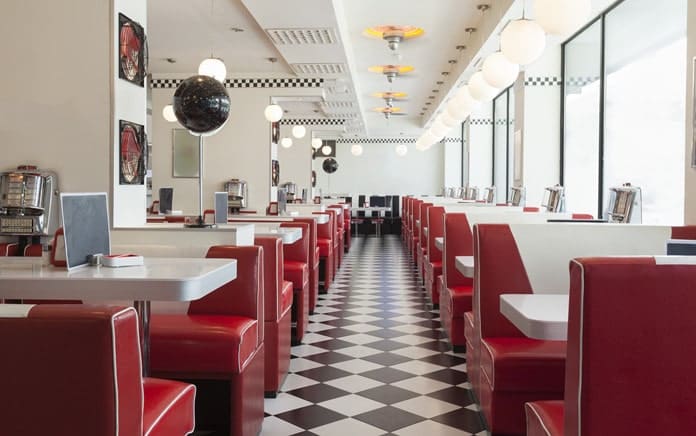Booth seating has a long history that goes back many centuries and is a standard fixture in eateries, cafés, bars, and other public places. Simple seats from mediaeval taverns have developed into recognizable, cozy seating arrangements that enchant customers. In this article, we’ll examine the history, development, and ongoing appeal of booth seating in various contexts to discover why it’s so common and a classic option for contemporary interior design.
ORIGIN OF BOOTH SEATING
Booth sitting originated in mediaeval Europe when eating communally in taverns and inns was a regular practice. Simple wooden seats flanked the walls, seating many visitors simultaneously, encouraging camaraderie and social connections. These seats changed throughout time into enclosed, semi-private spaces that provided some level of seclusion and intimacy.
THE AMERICAN DINNER INFLUENCE
With the emergence of American diners in the early 20th century, booth seating significantly increased in popularity. These venerable businesses pioneered the idea of private booths divided by partitions, providing patrons with a more intimate eating experience. People were drawn to the diner’s attractiveness and cozy atmosphere, which led to the widespread adoption of booth seating in many restaurants worldwide.
COMFORT AND PRIVACY
The unrivalled comfort and seclusion of booth seats are among the main factors contributing to its lasting appeal. Unlike typical open-sitting configurations, booths offer a sense of containment, sheltering guests from outside noise and distractions. This fosters a cozy environment where individuals may dine, converse, or work quietly, improving the entire eating or social experience.
MAXIMIZING SPACE AND CAPACITY
Booth seating has become popular due to its benefits in saving space. Booths can effectively utilize floor space in restaurants and cafés, allowing for the seating of more customers without making the place feel crowded. This innovative use of room may significantly increase sitting capacity for smaller businesses, increasing income possibilities.
INTERIOR DESIGN AND AESTHETICS
Beyond its practical uses, booth seating has become crucial to beautiful interior design. Booths may be tailored to fit the mood and concept of any institution because of the available materials, colours, and patterns. From sleek, contemporary designs to rustic, historic booths, they may match the overall décor and give the room a sense of elegance and character.
FLEXIBILITY AND VERSATILITY
The versatility of booth seating has led to its enduring appeal in contemporary contexts. It may be found in various settings, including posh restaurants, quick food restaurants, fashionable cafés, and university cafeterias. Because of its adaptability, booth seating is appropriate for all market sectors and demographics.
BOOSTING CUSTOMER SATISFACTION
According to studies, booth seating increases consumer happiness. The cozy and secluded seating arrangement may impact customers’ opinions of their experience. A welcoming dining atmosphere is important since satisfied customers are more likely to return and suggest the business to others.
ERGONOMIC CONSIDERATION
Booth seating has ergonomic advantages as well. For meals, the fixed backrest offers crucial support, minimizing discomfort throughout prolonged periods of sitting. The set table height also promotes good dining posture, lowering the likelihood of strain and exhaustion.
MODERN INTERPRETATION
Booth seating has advanced further in modern interior design to accommodate shifting tastes and fashions. Innovations, including flexible tables, USB charging outlets, and integrated technology, have been included to meet the digital era’s demands. Booth seating is now more in line with the emphasis on ecologically responsible behaviors because sustainable materials and designs are popular.
CONCLUSION
Since its first days in taverns in the Middle Ages, booth seating has advanced significantly. Its ongoing allure stems from its comfort, seclusion, and aesthetically diverse appeal, which continue to appeal to customers of various ages and origins. Booth seating has shown versatility by adopting contemporary elements while preserving its classic charm when interior design trends change. Booth seating remains a sign of hospitality, making visitors feel welcome and at ease, whether in a vintage diner, a stylish café, or an upmarket restaurant, and it probably will for years to come.








